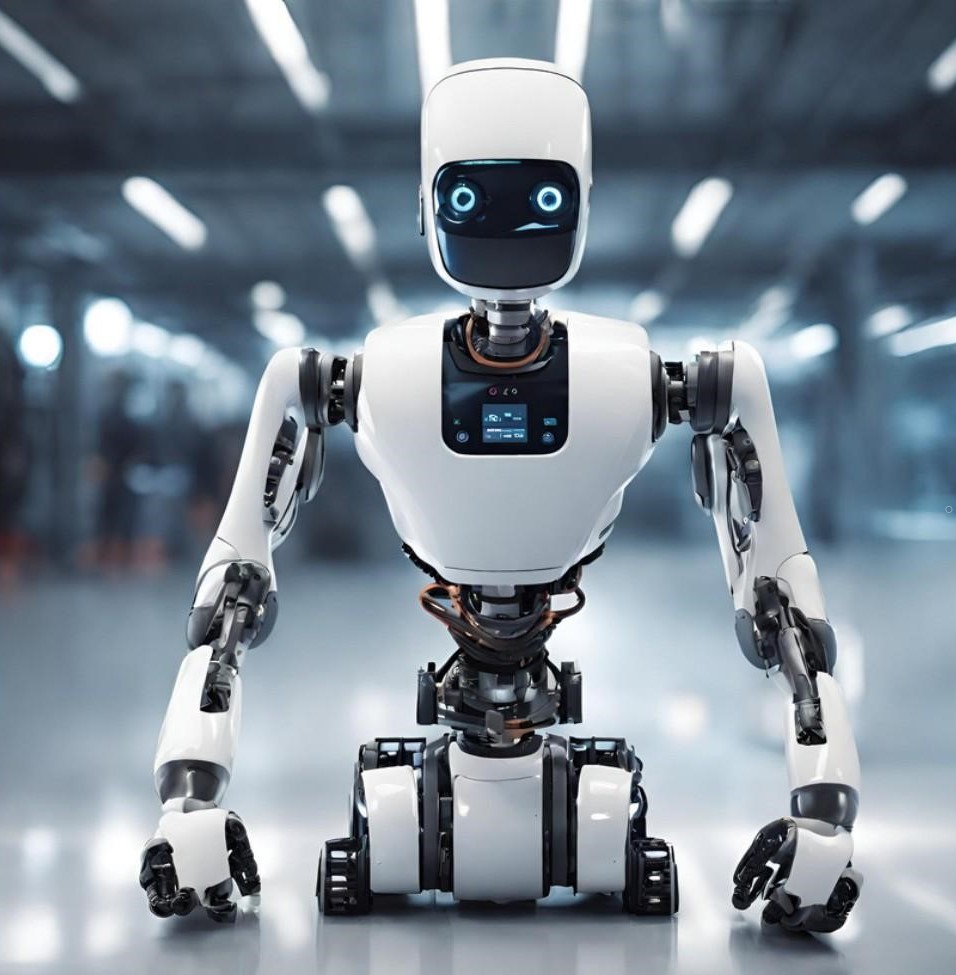
Robotics is a multidisciplinary field that involves the design, construction, operation, and use of robots. Robots are autonomous or semi-autonomous machines that can perform tasks independently or with minimal human intervention. The field of robotics encompasses a wide range of technologies, including mechanical engineering, electrical engineering, computer science, and artificial intelligence.
Continuing the historical journey, the late 20th century witnessed the introduction of robotic technologies into various industries, ranging from automotive assembly lines to hazardous environments like nuclear plants. As computing power surged, robots evolved from executing repetitive tasks to more intricate operations, guided by sensors and advanced control systems. The advent of the internet and connectivity further propelled robotics, enabling remote operation and collaboration between robotic systems. Today, with the rise of industry 4.0, robotics is at the forefront of a new era, integrating with technologies like the Internet of Things (IoT) and cloud computing to create intelligent, interconnected systems that redefine the boundaries of automation.
In manufacturing, the impact of robotics is profound. Robotic arms, automated assembly lines, and collaborative robots (cobots) have revolutionized production processes. These advancements go beyond mere efficiency gains, fostering flexibility in manufacturing setups. Cobots, designed to work alongside humans, exemplify the collaborative nature of modern robotics. They enhance precision, reduce errors, and contribute to a safer work environment. Smart manufacturing, powered by robotics, is not just about producing more; it's about producing smarter, with a focus on adaptability and customization.
The fusion of artificial intelligence (AI) and robotics marks a paradigm shift. Machine learning algorithms enable robots to learn from data, adapt to changing environments, and optimize their performance. This synergy enhances the cognitive abilities of robots, allowing them to understand, interpret, and respond to complex situations. From autonomous vehicles navigating unpredictable terrains to robots in homes understanding human commands, the marriage of AI and robotics is expanding the boundaries of what machines can achieve. This partnership is at the forefront of creating intelligent, learning machines that play a vital role in our interconnected world.
Healthcare is witnessing a transformative wave with the integration of robotics. Surgical robots, such as the da Vinci Surgical System, enable surgeons to perform intricate procedures with enhanced precision and minimal invasiveness. Robotic exoskeletons assist individuals with mobility impairments, offering new possibilities for rehabilitation. Telepresence robots facilitate remote healthcare, connecting patients with healthcare professionals. The intersection of robotics and healthcare not only improves patient outcomes but also addresses challenges such as access to specialized medical expertise, ultimately reshaping the way we approach healthcare delivery.
Service robots are breaking free from the confines of industrial settings, stepping into everyday environments. Hotels employ robots for concierge services, restaurants deploy them for automated food delivery, and customer service is enhanced by interactive robots. These robots, designed to interact with humans, bring automation into service industries traditionally reliant on human labor. While streamlining processes and enhancing efficiency, they also redefine customer experiences. The rise of service robots signals a shift towards a more interconnected world where automation is seamlessly integrated into our daily lives, transcending the factory floor.
Navigating the challenges posed by widespread robotics adoption requires a holistic approach. Job displacement, often a concern, necessitates a commitment to upskilling and reskilling programs to empower the workforce for evolving roles. Addressing privacy concerns involves implementing robust data protection measures and transparent data practices. Ensuring ethical AI in robotics demands ongoing scrutiny of algorithms, bias detection, and the establishment of ethical guidelines within the industry. Collaborative efforts between governments, industries, and academia are pivotal to establishing frameworks that strike a balance between technological progress and societal well-being.
Educational initiatives should extend beyond traditional classroom settings, incorporating hands-on experiences and real-world applications. Collaborations between educational institutions and industry partners can facilitate internships, apprenticeships, and practical projects, providing students with exposure to the latest technologies. Additionally, promoting diversity in STEM education ensures a broad spectrum of perspectives in shaping the future of robotics. Continuous learning platforms, accessible to professionals and enthusiasts alike, contribute to a culture of ongoing skill development, preparing individuals for the dynamic challenges presented by a robotic future.
The horizon of robotics innovations continues to expand with the exploration of soft robotics, where robots mimic the flexibility and adaptability of natural organisms. Swarm robotics, inspired by collective behaviors, envisions large groups of robots collaborating to perform tasks efficiently. Quantum computing and neuromorphic engineering hold the promise of unlocking unprecedented computational power, revolutionizing the capabilities of intelligent machines. The integration of these advancements is poised to redefine the very essence of robotics, pushing the boundaries of what was once thought possible and opening doors to applications that were once considered science fiction.
The symbiotic relationship between humans and robots extends beyond physical collaboration to the cognitive domain. Human-robot interaction interfaces are evolving to be more intuitive, allowing humans to communicate with robots effortlessly. Machine learning algorithms enable robots to understand and adapt to human behavior, fostering a sense of teamwork. This collaboration is particularly evident in sectors like healthcare, where robotic assistants work alongside medical professionals to enhance patient care. As technology progresses, this symbiosis will become more refined, with humans and robots seamlessly blending their strengths to tackle complex challenges across diverse industries.
In conclusion, the transformative power of robotics is reshaping our understanding of automation. The historical evolution, challenges, and ethical considerations paint a nuanced picture of the robotic landscape. Education emerges as a key driver, empowering individuals to navigate this landscape with resilience and adaptability. As we peer into the future, the horizon of robotics innovations beckons, promising advancements that will redefine industries and societies. Embracing this future involves a collective responsibility to navigate challenges, foster education, and cultivate a collaborative relationship between humans and robots. In doing so, we not only harness the potential of robotics but also contribute to a future where innovation and ethical considerations coalesce, creating a harmonious and progressive coexistence between humans and intelligent machines.
Author
JESIMA K - CSE
2024-02-24